It\’s no secret that the Internet has gotten significantly more dangerous in the last decade. In the 1990s, we only had to worry about accidentally downloading a malicious file from a rogue website that would inadvertently trigger a cyber- attack. Flash forward to today and the potential attack sources are seemingly endless, with phishing attacks being chief among them.
Phishing Defined
A phishing attack is defined as a particular type of cyber incident where someone posing as a legitimate source – be it a business client, financial institution, or something similar – tricks a victim into providing sensitive information. This can include, but is not limited to, usernames and passwords, bank accounts numbers, credit card numbers, and more. Once that information has been provided, it can then be used by hackers to compromise an entire business.
Phishing emails are successful in part because they\’re straightforward. They take on such a simplistic appearance that most people don\’t think twice about them until it\’s too late. Thankfully, that\’s also the same mentality that can be used to avoid them altogether. To make sure that your employees are aware of the signs to spot a phishing email, there are a number of important things they\’ll need to keep in mind.
The best way to help your employees prevent phishing email attacks involves educating them in what to look for. The emails will appear as if they\’re from a legitimate sender, but they\’ll have a few characteristics that will illustrate that things are not right.
Identifying a Phishing Email
The biggest \”tell\” that you may be looking at a phishing email is some type of hyperlink included in the body. The message may ask the recipient to click a link and enter certain information, even in situations where this might not make sense. Educate employees as to how they can hover their mouse over the hyperlink to see where it is actually directing them. They should pay careful attention to the URL to make sure that everything is as it should be.
A good example would be a hyperlink that directs to a financial institution\’s website, like Bank of America. If you hover over the hyperlink and see that it is really going to an address like \”www.bankoamerica.com,\” you notice that the \”f\” in \”of\” is missing. That is a clear indication that something is wrong. In that situation, you\’re looking at a phishing attack. Your employees should delete the message immediately and alert the proper system administrator.
Another example of phishing would be emails that contain suspicious attachments. Unless an employee has reached out to someone and specifically requested a file, they should never download an attachment within an email. This is especially true if the attachment has a file extension that is anything other than \”.txt.\” Attachments with extensions like \”.exe\” are often executable files that could contain ransomware or other types of malware.
If your employees suddenly receive an email from a client they haven\’t spoken with in a while, or an unfamiliar or unusual sender, these are also signs of phishing. In both situations, the message will convey a sense of urgency. The sender will indicate that they need \”immediate help\” in an attempt to prevent your employees from thinking too much about what information is being requested.
Preventing Phishing Emails: Breaking Things Down
To protect against phishing emails, always make sure that your business employs spam filters whenever possible. Modern day spam filters can examine the origin of an email and compare it against known blacklists. At that point, messages with malicious intentions can be prevented from entering the inboxes of your employees. Likewise, employees should know that if an email is asking them to sign into a specific website, they should never click the link that is embedded. Instead, they should go to the website directly and sign in that way.
Unfortunately, phishing emails are very much a way of life on the modern-day internet. As an employer, it is in your best interest to educate your employees about phishing to prevent them from becoming a much larger problem in the future.

